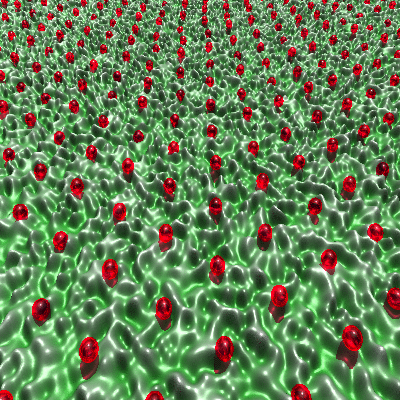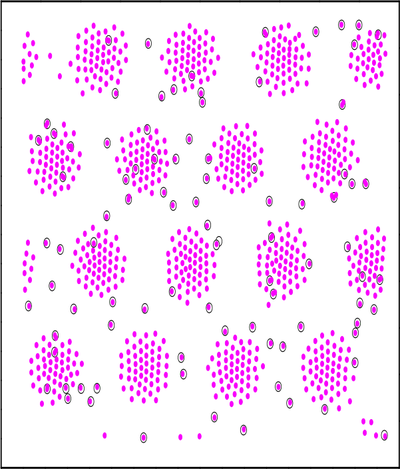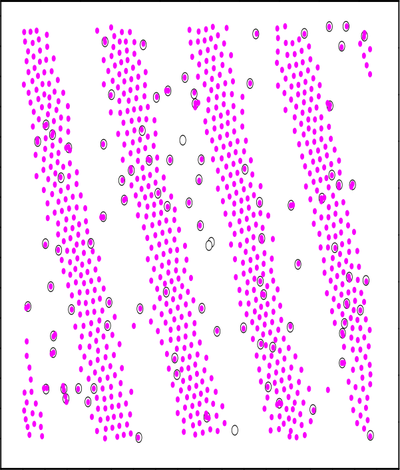
PhD project opportunity: Emergence of static and dynamic configurations of vortices in type 1.5 superconductorsThis position is available to EU/UK applicants only, unless additional funding/scholarships are obtained by the student to cover the overseas fees difference. Funding is provided for maintenance (GBP 16,500 per year) and study fees. A first class degree is expected (or upper second plus additional relevant experience). Project outline The standard classification of superconductors divides them into two classes according to their behavior in the presence of an external magnetic field: Type-I superconductors expel low magnetic fields completely (the so-called Meissner state), while elevated fields produce macroscopic normal domains in the interior of the superconductor. Type-II superconductors possess stable vortex excitations which can form a vortex lattice as the energetically preferred state in an applied magnetic field. In the study of type-II superconductors, the vortices are often described as (point-like) particles that repel each other. As the particles can form a hexagonal lattice (i.e. a solid), or -- if exposed to a high temperature -- melt into a liquid, this system is referred to as 'vortex matter'. In studies of vortex matter in thin films, one investigates repelling particles in a two-dimensional universe. As material imperfections create areas in the superconductor that attract the particles, and any supercurrents flowing through the sample will drive the vortices in a particular direction, there is very rich physics in these systems with a variety of emerging vortex matter configurations. For example, in the presence of strong disorder, vortices flow across the sample in an avalanche like fashion, where as for weaker disorder they form a (nearly) hexagonal moving lattice (technically known now as a moving Bragg glass). More recently, it has been predicted (2005) and later confirmed experimentally (2009) that in particular materials there can be stable vortices with intervortex interaction which is attractive at longer range and repulsive at short range (in contrast to purely repulsive interaction between vortices in single-component superconductors). See also this summary. The existence of a long-range interaction that is repulsive and attractive (for different particle spacings) opens up a significantly wider range of options for static stable configurations, and promises very rich dynamic behaviour. In this project, we will study the statics and dynamics of vortex matter in superconductors of type 1.5. We use Python combined with C/C++/OpenCL/CUDA code where necessary. The group has experience in these simulations from extensive studies of vortex matter dynamics in type 2 superconductors, and the development and use of the vdsim simulation code. This project can be funded through the Doctoral Training Centre in Complex Systems Simulations (see http://www.icss.soton.ac.uk) if desired. 
A hexagonal array of purely repulsive vortices (represented as red spheres) in the presence of weak disorder (shown as an energy landscape in green -- positions on top of mountains cost a lot of energy) in a type 2 superconductor. The (nearly) hexagonal lattice emerges as the disorder from the (so-called pinning) landscape is comparatively low. Several movies of this system are available. 
In a type 1.5 superconductor attraction at short distance and repulsion at long distances can lead to emergence of stripes of vortices (which arrange in a hexagonal array); taken from Phys Rev B 84 014515 (2011). The open circles are very strong pinning centres (reflecting strong damage to the superconducting sample at that point): we can see that individual vortices are captured by these pinning centres. 
For a different magnetic field (and thus a different average vortex particle density, and a different average vortex spacing) in the same type 1.5 superconductor emergence of superclusters can be observed. (Source: Phys Rev B 84 014515 (2011)) If you wish to discuss any details of the project informally, please contact Hans Fangohr, CED research group, Email: h.fangohr@soton.ac.uk, Tel: +44 (0) 2380 59 8345 Application deadline: applications are invited as soon as possible Please contact Hans Fangohr <fangohr@soton.ac.uk> for informal queries, expressions of interest or applications.
|
|||